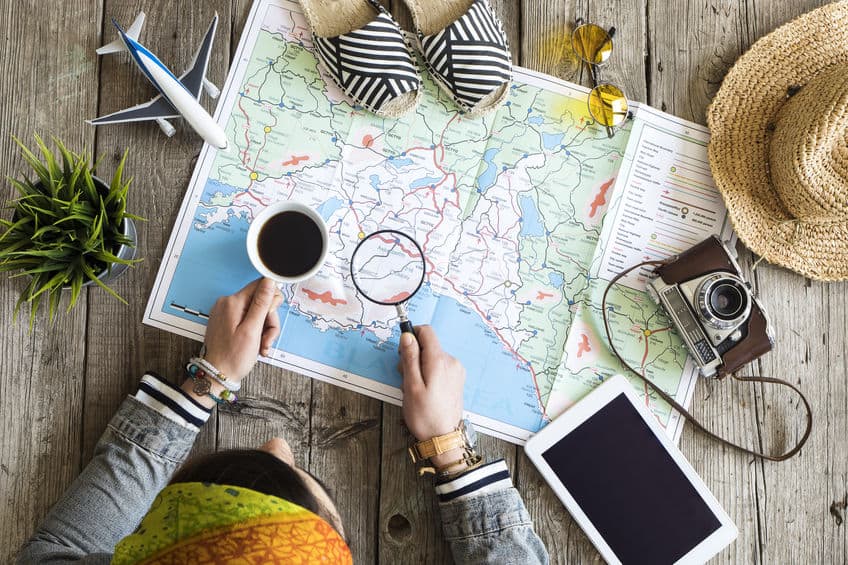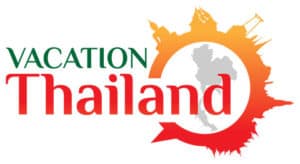
f you’ve never visited Thailand (or Southeast Asia) before, it’s totally normal to feel like you “should” research everything or risk a trip that unravels on day one. The good news: Thailand is one of the easiest countries in the region to travel through. Once you understand a handful of practical basics—weather patterns, how to pay, how to stay connected, and what to pack—your planning becomes simple, fast, and honestly kind of fun.
This updated guide breaks down the “best time to visit Thailand” myth, plus real-world tips on costs, transportation, SIM cards/eSIM, ATMs, jet lag, power adapters, and packing—written for normal humans (not travel robots).
The “best time to visit Thailand” myth (and what actually matters)
People love asking: When’s the best time to visit Thailand? The honest answer is: it depends on what you want most—sunny beaches, fewer crowds, greener scenery, diving visibility, or festival energy.
Thailand is typically described with three travel seasons:
- Dry / “cooler” season: generally November to March (sometimes stretching into April)
- Hot season: roughly March to June
- Rainy / “green” season: usually July to October (with regional exceptions)
Travel media and guides often label November–March as “high season”, and that tracks with crowds and pricing.
The key detail most people miss: Thailand’s coasts don’t share the same rainy season
Thailand’s weather isn’t one-size-fits-all—especially once you get to the islands.
- The Andaman Coast (Phuket, Krabi, Phi Phi, etc.) is typically at its calmest and clearest around November to February, with better odds of blue-sky days. Travel + Leisure
- The Lower Gulf islands (Koh Samui, Koh Phangan, Koh Tao) can be rainiest from September through December, even while other parts of Thailand feel relatively dry. Travel + Leisure
So if your dream is “Thailand beaches + minimal rain,” don’t just pick dates—pick the right coastline for those dates.
Monsoon season isn’t a constant downpour
Yes, “monsoon season” sounds like a movie where your sandals float away. In reality, many days in green season look like this:
- sunny morning
- dramatic clouds in the afternoon
- a heavy shower (sometimes 30–90 minutes)
- then… dinner like nothing happened
Some islands and boat routes do get rougher at times, so keep your plans flexible (and don’t schedule your only must-do boat tour on your final morning).
One seasonal exception worth taking seriously: Northern Thailand haze (Chiang Mai area)
If you’re planning Chiang Mai (or the north in general), pay attention to burning/haze season, which often spikes roughly February through April.
This isn’t “a little smog.” There can be real air-quality impacts, and Chiang Mai is known for seasonal pollution spikes that are visible even from space imagery and satellite monitoring.
A practical way to handle it:
- Check AQI (air quality index) daily before (and during) your time up north
- If you’re sensitive (asthma, respiratory issues, kids, etc.), consider shifting north to a different month or keeping the north as a “Plan B” portion of your trip
- If you’re already locked into those dates, consider routing more time to the islands or the south during peak haze weeks
The U.S. travel information page for Thailand specifically notes that air pollution can be significant and points travelers to AQI resources for Bangkok and Chiang Mai.
(And yes—Pai is still a popular detour, but it’s also in the north. The “best escape” from haze is usually a change of region, not just a change of town.)
What Thailand really costs (and how to keep it affordable without feeling cheap)
Thailand can be an amazing value… if you spend intentionally.
Food: your easiest win
You can eat unbelievably well without spending much:
- Street food and local shops are often the best flavor-per-dollar anywhere on earth
- Food courts (especially in malls) are clean, fast, and budget-friendly
- Want the Michelin brag without the Michelin bill? Thailand has plenty of celebrated casual spots, including inexpensive options highlighted in major travel coverage of Bangkok’s food scene.
Transportation: cheap, fast, and (usually) air-conditioned
In Bangkok, the BTS Skytrain and MRT are your best friends for avoiding traffic and staying sane—especially at rush hour. Both systems are active and well-established in the city. สถานเอกอัครราชทูต ณ กรุงวอชิงตัน
For door-to-door rides, Grab is widely used in Thailand (think: Uber-style ride-hailing). It supports multiple payment methods depending on your setup and location, including cashless options. Grab
Accommodation: every tier exists
Thailand has everything from budget rooms and hostels to luxury resorts that feel wildly “underpriced” compared to what the same experience costs in the U.S. or Europe. If you want to keep costs down:
- stay a little farther from the most tourist-saturated blocks
- book longer stays (weekly rates can be noticeably better)
- travel shoulder season (often the sweet spot of price + weather)
A reality check on crowds
Thailand remains one of the most-visited countries on earth. For context, Thailand’s pre-pandemic record was nearly 40 million foreign tourists in 2019, and recent reporting shows tourism continues to be a major economic engine.
Translation: even in “low season,” you’re not going to have Bangkok to yourself—and that’s okay. You’re here for the energy, too.
How to use your phone in Thailand (SIM vs eSIM, maps, and messaging)
The easiest option in 2026: eSIM (if your phone supports it)
If your phone supports eSIM, you can often set up service quickly and skip the tiny-SIM juggling act. If you prefer a physical SIM, Thailand is still one of the easiest places in the world to buy one.
Buying a tourist SIM is still ridiculously simple
At major airports (Bangkok and beyond), you’ll see kiosks for major carriers offering tourist packages.
The big consumer carriers serving travelers include:
- AIS (tourist SIM/eSIM offers are actively marketed) True-dtac
- True (tourist packages are widely sold) AIS
- dtac (tourist SIM options also available) www.dtac.co.th
Prices and data allowances change often, but the process is consistently easy: show your passport, pick a plan, and you’re connected.
Don’t rely on data alone: download offline maps
Do this before you leave your hotel Wi-Fi:
- Download offline maps for Bangkok (and any other region you’ll visit)
- Save key locations: hotel, nearest BTS/MRT station, favorite food streets, and a hospital near you (just in case)
Messaging: what people actually use
You can use WhatsApp in Thailand—but LINE is the dominant everyday messaging app for many locals and businesses.
So a good setup is:
- Use LINE for local contacts/tours/shops if needed
- Use WhatsApp/iMessage/Instagram/Signal for your own friend groups
Money in Thailand (ATMs vs cash, and the fee that surprises everyone)
Tell your bank you’re traveling
Do it. Nothing ruins a mood like a declined card when you’re sweaty, jet-lagged, and trying to buy water.
Expect ATM fees for foreign cards
Many Thai ATMs add a local fee per withdrawal for international cards—often cited around 220 THB, with fees sometimes higher depending on the ATM/bank/card network.
How to beat this:
- Withdraw larger amounts less often (instead of 5 tiny withdrawals)
- If your bank reimburses ATM fees, use that card
- Decline DCC (Dynamic Currency Conversion) if an ATM offers to charge you in USD—choose THB for a better exchange rate in most cases
Should you bring cash?
A hybrid strategy is the least stressful:
- Bring a modest amount of cash for arrival-day comfort (food, transit, SIM)
- Use ATMs for the bulk, but withdraw in fewer, larger transactions
- Keep money split (some on you, some locked in luggage, some in a separate pocket)
Jet lag: how to not lose your first three days
Thailand jet lag is real—especially coming from North America. A few simple rules help a lot:
- Hydrate hard on the flight and day one
- Go easy on alcohol the first night (save the big Khao San energy for when your body knows what year it is)
- Get sunlight in the morning local time
- If you nap, keep it short (20–90 minutes) and set an alarm
- A Thai massage on day one is not only relaxing—it’s a cheat code for feeling human again
Power adapters and voltage in Thailand (what you actually need)
Thailand commonly uses ~230V at 50Hz, so most modern phone/laptop chargers are fine—but always check your device’s power brick (it should say something like “100–240V”).
Outlet shapes can vary, and many places accept multiple plug types, but bringing a small universal adapter is still smart—especially in older hotels or guesthouses.
What to pack for Thailand (the list that saves first-timers)
You don’t need to pack your whole life. You need to pack strategically.
Clothes
- Lightweight t-shirts and breathable tops
- A couple of nicer outfits (some venues won’t love tank tops)
- Lightweight long pants (you’ll want them for temples and some nicer places)
- A thin layer for aggressive indoor A/C (malls can feel like refrigerators)
Weather + comfort
- Packable rain jacket or poncho (green season surprise showers are real)
- Comfortable walking shoes + sandals
- Swimsuit (obviously)
- Sunscreen + bug repellent
Health + “I’m glad I brought this”
- Rehydration packets/electrolytes
- A small pharmacy kit (band-aids, anti-diarrheal, pain reliever)
- If traveling during haze-prone months: consider a good-quality mask for bad AQI days Travel.gov
Temple etiquette reminder (so you don’t get turned away)
Many temples require shoulders and knees covered. If you forget, you can often buy or rent cover-ups nearby—but it’s easier (and cheaper) to just pack the right basics.
IMPORTANT 2026 update: Entry rules and the TDAC digital arrival form
Entry requirements can change, so always double-check close to departure. That said, here are two big updates travelers should know:
- Visa-exempt entry for U.S. passport holders is listed as up to 60 days (per current embassy guidance). สถานเอกอัครราชทูต ณ กรุงวอชิงตัน+1
- Thailand introduced the Thailand Digital Arrival Card (TDAC) system, with guidance stating travelers should complete it within a short window before arrival (commonly described as within 3 days prior). สถานเอกอัครราชทูต ณ กรุงวอชิงตัน+1
If you only remember one thing from this section: use official sources when you complete forms and verify requirements.
FAQ
What are internet speeds in Thailand like?
In everyday travel terms: fast enough that you’ll stop thinking about it. Wi-Fi is common in hotels, cafes, and restaurants, and mobile data coverage is strong in cities and tourist areas. If you plan to work remotely or upload a lot, choose a tourist SIM/eSIM plan with generous data and hotspot support.
Do I need a visa to enter Thailand?
It depends on your passport and your length of stay. For U.S. travelers, current embassy and U.S. travel guidance describe a visa-exempt entry option up to 60 days, but you should verify right before you fly since rules can change. สถานเอกอัครราชทูต ณ กรุงวอชิงตัน+1
Final reassurance (because you deserve it)
Thailand is popular for a reason: it’s beautiful, welcoming, flavorful, and surprisingly easy to navigate once you understand a few basics. Plan the big rocks (route, coast choice by season, north vs haze months, how you’ll handle money + phone), then leave room for spontaneity—because some of your best Thailand memories will come from the unplanned afternoons.
